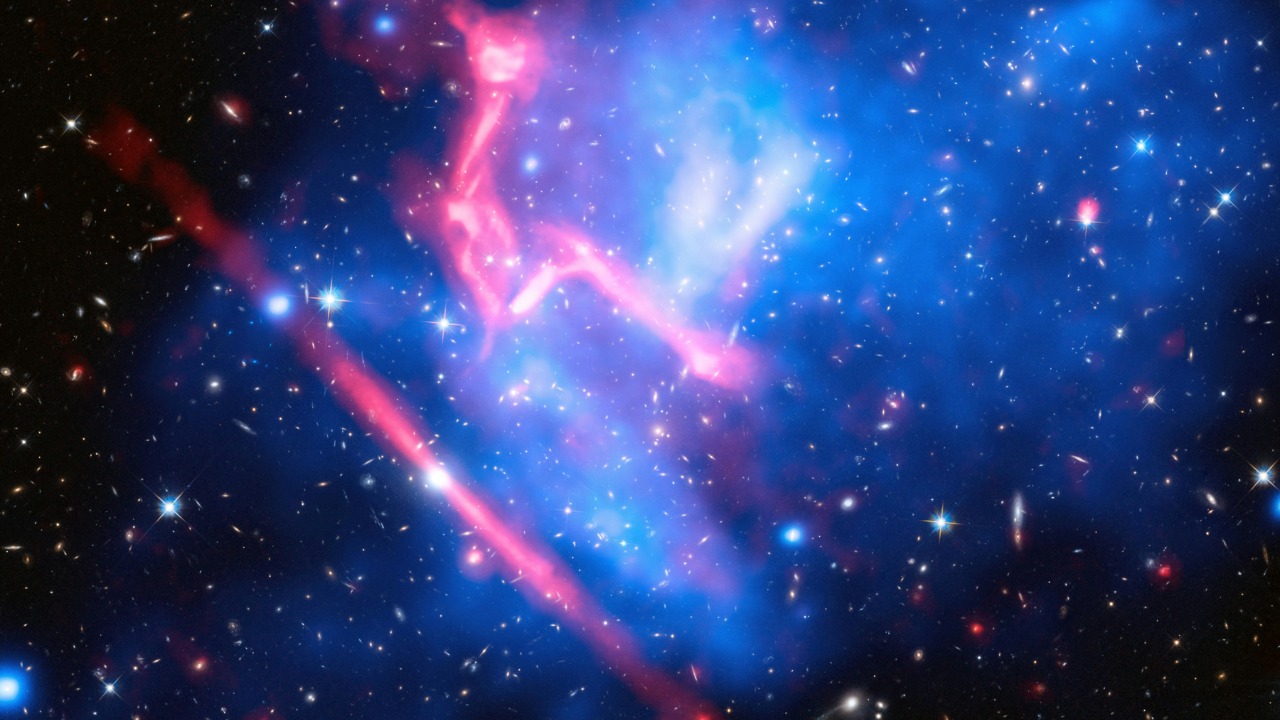
Microquasars in our Milky Way galaxy have emerged as the most extreme particle engines, accelerating cosmic rays to unprecedented energies. These compact objects, found in binary star systems, rival supermassive black holes in their particle-boosting prowess. A notable example, identified on June 26, 2025, as the new cosmic ray monster, underscores the significant role microquasars play in producing high-energy particles that permeate our galaxy.
What Are Microquasars?
Microquasars are binary star systems that feature a compact object, such as a black hole or neutron star, which accretes material from a companion star. This process results in the production of powerful jets, making these systems act as scaled-down quasars within the context of the Milky Way. They form through stellar evolution in binary pairs, with the compact object’s gravity driving the ejection of relativistic plasma, a key aspect of the binary star system in the cosmic ray monster discovery.
These systems are characterized by key observational signatures, such as radio and X-ray emissions from the jets. These emissions provide evidence of their particle acceleration capabilities, solidifying their status as the galaxy’s most extreme engines.
Discovery and Identification in the Milky Way
On June 26, 2025, a specific microquasar was identified as the new cosmic ray monster. Located within a binary star system in the Milky Way, this discovery was made possible through the use of telescopes that captured the system’s relativistic jets and high-energy emissions. This identification ties into the recent reporting on microquasars’ emergence as particle engines.
Initial observations revealed the system’s scale and activity, including metrics on jet velocities approaching light speed. These observations provide a glimpse into the extreme conditions within these systems and their potential for particle acceleration.
Mechanisms of Particle Acceleration
Microquasars’ accretion disks and magnetic fields launch jets that Fermi-accelerate particles to tera-electronvolt energies. This process establishes microquasars as the Milky Way’s most extreme particle engines. Shocks within the jets play a crucial role in boosting cosmic rays, with the cosmic ray monster’s binary system serving as an example of efficient acceleration.
When compared to other galactic sources, microquasars’ compact size enables rapid, intense particle energization. This efficiency in acceleration is what sets these systems apart and highlights their potential for further study.
Impact on Galactic Cosmic Rays
Microquasars contribute to the Milky Way’s cosmic ray population by injecting high-energy protons and electrons. This was confirmed with the identification of microquasars as extreme engines on November 16, 2025. The cosmic ray monster’s output on June 26, 2025, serves as a benchmark for how one system can dominate local ray fluxes in the Milky Way.
These accelerated particles diffuse across the galaxy, influencing the chemistry of the interstellar medium. This propagation effect is another key aspect of microquasars’ impact on our galaxy.
Observational Evidence and Challenges
Multi-wavelength data from radio to gamma rays confirm the jet structures in microquasars. The 2025 discoveries were pivotal in validating their role as particle engines. However, detecting these systems can be challenging due to their rarity and faintness. The identification of the cosmic ray monster overcame these challenges through advanced surveys.
Upcoming telescope capabilities are expected to enhance the resolution of Milky Way microquasars, allowing for more refined energy estimates. These advancements will further our understanding of these extreme particle engines.
Broader Implications for Astrophysics
Microquasars connect to larger cosmic phenomena, such as quasars in distant galaxies, by scaling up their particle acceleration models. They also influence galactic evolution, including feedback on star formation through energized outflows. The 2025 findings on extreme engines and monsters have raised unresolved questions, such as the exact energy cutoffs in jets.
Future Directions in Research
Future research will likely involve targeted observations of known microquasars to map their cosmic ray contributions across the Milky Way. Interdisciplinary links, such as modeling particle interactions with the galactic magnetic field based on recent identifications, will also be explored.
Next-generation instruments hold the potential for breakthroughs in quantifying microquasars’ total impact on high-energy astrophysics. As we continue to uncover the mysteries of these cosmic ray monsters, we can expect a deeper understanding of our galaxy and the universe beyond.
More from MorningOverview